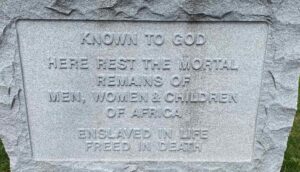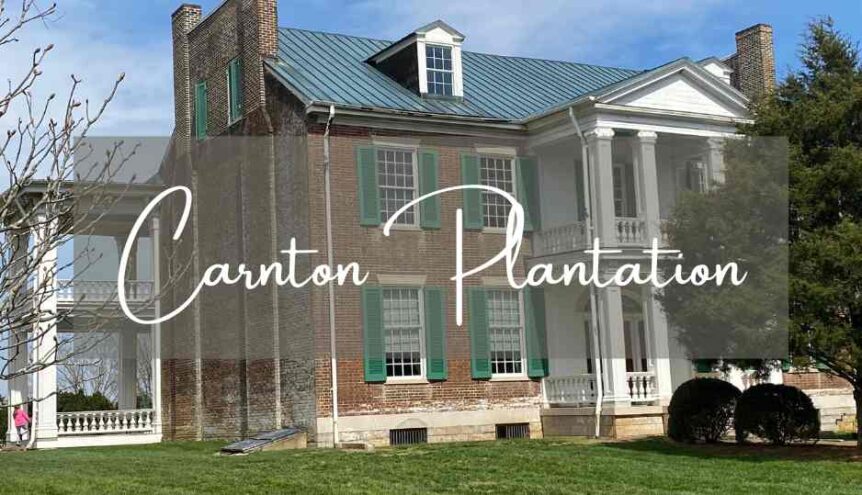 One of the first plantations on my to-tour list was The Carnton Plantation. You would think it was named for its original owner, but that wasn’t the case. This historic house and museum, located in Franklin, Tennessee, was built by Randal McGavock who emigrated from Virginia in 1796 and settled in Nashville. I suppose even back then it was quite the hub for the rich and famous.
One of the first plantations on my to-tour list was The Carnton Plantation. You would think it was named for its original owner, but that wasn’t the case. This historic house and museum, located in Franklin, Tennessee, was built by Randal McGavock who emigrated from Virginia in 1796 and settled in Nashville. I suppose even back then it was quite the hub for the rich and famous.
McGavock was involved in politics and even served as Nashville’s mayor from 1824-1825. It wasn’t long after that he moved his family to the completed Carnton plantation (which sat on 1,420 acres) where he farmed and raised thoroughbred horses until his death in 1843. His son John inherited the plantation and continued to work it until his own death fifty years later. Aside from raising thoroughbred horses, the McGavocks also grew wheat, corn, potatoes, and hay.
You may be wondering how the name Carnton came came to be. Randal McGavock’s father was born in County Antrim, Ireland, and Carnton was named for his birthplace. The original home was a Federal-style plantation house, and it became a very popular political center. McGavock was friends with both Andrew Jackson and James K. Polk. In fact, one of the parlors has a rocking chair that was a gift from Andrew Jackson.
When I toured the home, the docent showed us that there was originally a two-story wing, which was actually the first structure on the site. They weren’t sure what it was used for—some claim a smokehouse. However, it appeared there was a door going from that wing straight into one of the children’s rooms, so they surmised that whoever took care of the children might have been living in that section. This portion of the house was damaged by a tornado in 1909, and it was taken down. But we could clearly see the outline of where it once was on the exterior wall.
When John McGavock took over after his father’s death, he did what so many of the wealthy tended to do here in Middle Tennessee—he renovated the house, so it had a two-story Greek Revival portico and two dormers in the attic. These people definitely had a thing for Greek Revival! Shortly after this remodel, John married his cousin, Carrie Winder of the Ducros Plantation in Louisiana.
A couple years later, the couple added a two-story porch onto the rear of the house in order to take advantage of the southerly breezes. One had to do whatever they could before central air conditioning was invented. It’s interesting to stand in front of the “doors” leading to this porch. It’s clear that they were really reconstructed windows. Of course, they also added fancy wallpaper, carpet, and paint. The original wallpaper hangs in the central passage even today.
One of the interesting tidbits about the Carnton Plantation is that it was at the center for the battle of Franklin in November, 1964 which lasted for five hours. The house became a Confederate field hospital, and the McGavocks and their two children helped the surgeons and attended to the wounded. Several hundred eventually landed in this house, but 150 died the first night. I stood in one of the children’s rooms where many of the surgeries took place in front of large windows. The light (and refreshing breeze) were necessary to make surgery doable. There are bloodstains on the hardwood floors in both of the children’s rooms, even though they were covered in carpet at the time. There were hundreds of amputations, and over 1,750 Confederate deaths. Most buried on the battlefield.
Apparently, after the War was over and people went back to farming, they kept accidentally digging up dead bodies since the original graves were so shallow. To preserve the graves, John McGavock set aside two acres of land butting up to his family cemetery and raised the money to have the bodies disinterred and reburied. The docent said that years after, people came in search for their loved ones. Thankfully, the two men in charge of the reburials kept meticulous records, and over 80% of the bodies were identifiable by what these men found on the bodies as they moved them. That’s astounding.
It’s said that one of the soldiers recouping from battle wounds at the McGavock’s home fell in love with the children’s governess, and they were married. I did hear recently, however, that the governess died six years later, which is not how we writers want our romances to end. Then again, that’s where fiction comes in, right?
As with most of the historic tours, inside pictures were not allowed. My last plantation post (which will publish on Monday) is for the Oaklands Mansion in Murfreesboro. Not only were we allowed to take pictures, but the tour was also self-guided. Many of the pictures I will include in that post are reminiscent for all these plantations, so you’ll be able to get the general idea. If you’ve seen one Greek Revival plantation house, you’ve seen them all.
Be sure to enter here for a chance to win a $50 Amazon Gift Card and come on back tomorrow for another Plantation viewing.







Comments 2
Interesting info!
Author
Always fun to do into history.